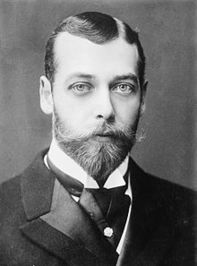What do you think?
Rate this book


739 pages, Hardcover
First published October 1, 2013
Germany’s pavilion was surmounted by a statue of a herald blowing a trumpet, suitable perhaps, for the newest of the great European powers. Inside was an exact reproduction of Frederick the Great’s library; tactfully, the Germans did not focus on his military victories, many of them over France. The western façade hinted, though, at a new rivalry, the one which was developing between Germany and the world’s greatest naval power, Great Britain: a panel showed a stormy sea with sirens calling and had a motto rumored to be written by Germany’s ruler, Kaiser Wilhelm II, himself: “Fortune’s star invites the courageous man to pull up anchor and throw himself into the conquest of the waves.” Elsewhere at the Exposition were reminders of the rapidly burgeoning power of a country that had only come into existence in 1871; the Palace of Electricity contained a giant crane from Germany that could lift 25,000 kilos…
The problem confronting [Chief of Staff Alfred von Schlieffen] was that the alliance between France and Russia which was developing throughout the 1890s presented Germany with the nightmare possibility of war on two fronts. Germany could not afford to divide its forces to fight all-out wars on both of those fronts so it would have to engage in a holding action on one side while it struck hard on the other to gain a quick victory. “Germany must strive, therefore,” he wrote, “first, to strike down one of these allies while the other is kept occupied; but then when the one antagonist is conquered, it must, by exploiting its railroads, bring a superiority of numbers to the other theater of war, which will destroy the other enemy.” While he initially thought of striking first at Russia, Schlieffen had changed his mind by the turn of the century: Russia was strengthening its forts to give it a strong defensive line running north to south through its Polish territories and building railways which would make it easier to bring up reinforcements…It made sense, therefore, for Germany to stay on the defensive in the east and deal with Russia’s ally France first.
“We also remember the Great War because it was such a puzzle. How could Europe have done this to itself and to the world? There are many possible explanations; indeed, so many that it is difficult to choose among them. For a start the arms race, rigid military plans, economic rivalry, trade wars, imperialism with its scramble for colonies, or the alliance system dividing Europe into unfriendly camps. Ideas and emotions often crossed national boundaries: nationalism with its unsavoury riders of hatred and contempt for others; fears, of loss or revolution, of terrorists and anarchists; hopes, for change or a better world; the demands of honour and manliness which meant not backing down or appealing weak; or Social Darwinism which ranked human societies as if they were species and which promoted a faith not merely in evolution and progress but in the inevitability of struggle. And what about the role of individual nations and their motivations: … How did these all play their part in keeping Europe’s long peace or moving it towards war?“
“It was Europe’s and the world’s tragedy in retrospect that none of the key players in 1914 were great and imaginative leaders who had the courage to stand out against the pressures building up for war.”
 July 1914: Countdown to War by Sean McMeekin, I would recommend this as a companion; it differs in conclusions and some focus areas but offers a compelling account, too. [My review: https://www.goodreads.com/review/show...]
July 1914: Countdown to War by Sean McMeekin, I would recommend this as a companion; it differs in conclusions and some focus areas but offers a compelling account, too. [My review: https://www.goodreads.com/review/show...] The Sleepwalkers: How Europe Went to War in 1914 by Christopher Clark, which is another highly recommended account published in 2014 like MacMillan's and McMeekin's for the WWI centenary.
The Sleepwalkers: How Europe Went to War in 1914 by Christopher Clark, which is another highly recommended account published in 2014 like MacMillan's and McMeekin's for the WWI centenary. King George V
King George V  Kaiser Wilhelm II
Kaiser Wilhelm II  Tsar Nicolas II
Tsar Nicolas II Tsarina Alexandra
Tsarina Alexandra"What was dangerous for the future was that each of Austria-Hungary and Russia was left thinking that threats might work again. Or, and this was equally dangerous, they decided that next time they would not back down." (p.499)Thus when the assassination in Sarajevo occurred and Austria made impossible demands of Serbia in retaliation, nobody was inclined to back down. The multiple alliances that had developed over the years complicated matters.
"By 1914 the alliances, rather than acting as brakes on their members, were too often pushing the accelerators. (p. 531)"The following are some of my observations about the history described by this book:
"The Great War was not produced by a single cause but by a combination and, in the end, human decisions."In other words, it's complicated. This is a long book (32 hours in audio format) and once again shows that the more one learns about history the less clear cut become the reasons for directions taken.
 Peacemakers: The Paris Conference of 1919 and Its Attempt to End War
Peacemakers: The Paris Conference of 1919 and Its Attempt to End War  The Sleepwalkers: How Europe Went to War in 1914 by Christopher Clark
The Sleepwalkers: How Europe Went to War in 1914 by Christopher Clark

